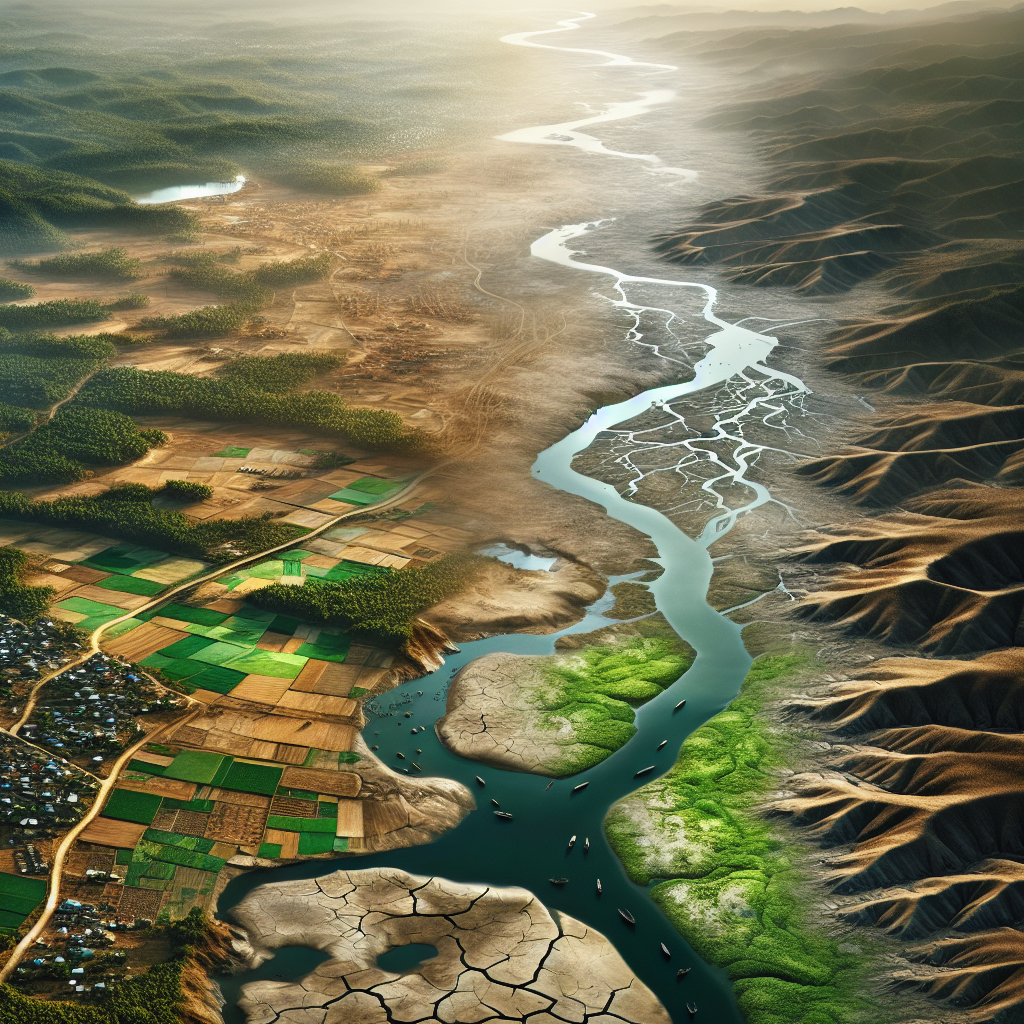The Impact of Climate Change on Water Resources
Climate change is unequivocally one of the most pressing issues of our time, with far-reaching implications for the planet’s ecosystems, human health, and economies. Among the various consequences of climate change, its impact on water resources stands out due to water’s essential role in sustaining life, supporting economies, and maintaining ecological balance. This article explores how climate change affects water resources globally and discusses potential mitigation and adaptation strategies.
Understanding the Impact
The effects of climate change on water resources are complex and multifaceted, influenced by factors such as temperature rise, altered precipitation patterns, and the frequency and intensity of extreme weather events. These changes can lead to water scarcity, quality degradation, and increased competition for water use among sectors and communities.
Altered Hydrological Cycle
Global warming has accelerated the hydrological cycle, affecting the distribution, timing, and quantity of precipitation. Higher temperatures increase the evaporation rate of water from soil and water bodies, leading to drier conditions in some regions. In contrast, other areas may experience increased rainfall, leading to flooding. Such alterations can disrupt the availability of freshwater resources, affecting agricultural productivity, drinking water supply, and ecosystem health.
Melting Glaciers and Reduced Snowpack
Glaciers and snowpacks, which act as natural water reservoirs, are retreating and diminishing due to rising temperatures. This not only leads to a reduction in the long-term availability of water for millions of people but also increases the risk of floods in the short term. Regions dependent on meltwater from mountain ranges like the Himalayas, Andes, and Rockies are especially vulnerable to these changes.
Sea Level Rise and Saltwater Intrusion
The thermal expansion of seawater and the melting of ice caps and glaciers contribute to rising sea levels, which can lead to the intrusion of saltwater into freshwater systems. This phenomenon threatens freshwater resources by contaminating aquifers and river deltas, upon which many communities and agricultural areas depend.
Water Quality
Climate change also impacts water quality. Increased temperatures can lead to higher concentrations of pollutants by reducing the water’s capacity to dissolve oxygen, which affects aquatic life and the safety of drinking water. Furthermore, extreme weather events, such as floods, can exacerbate the spread of pollutants by overwhelming sewage systems and spreading contaminants across landscapes and into water bodies.
Mitigation and Adaptation Strategies
Addressing the impact of climate change on water resources requires a two-pronged approach: mitigation to reduce the severity of climate change and adaptation to manage its unavoidable consequences.
Mitigation
Mitigation efforts focus on reducing greenhouse gas emissions to slow down global warming. These include transitioning to renewable energy sources, enhancing energy efficiency, and promoting sustainable land use practices. Protecting and restoring natural ecosystems like forests, wetlands, and grasslands can also sequester carbon and contribute to climate change mitigation while enhancing water availability and quality.
Adaptation
Adaptation strategies aim to make water systems more resilient to the impacts of climate change. These include improving water use efficiency in agriculture, industry, and households; developing infrastructure to store and conserve water; and investing in technologies for water recycling and desalination. Additionally, integrated water resources management (IWRM) can promote the coordinated development and management of water, land, and related resources to maximize economic and social welfare without compromising the sustainability of vital ecosystems.
FAQs
How does climate change affect water availability?
Climate change alters precipitation patterns, increases evaporation rates, and leads to the melting of glaciers and snowpacks, affecting the availability of freshwater resources for consumption, agriculture, and ecosystems.
Can climate change lead to both water scarcity and flooding?
Yes, climate change can lead to more extreme weather events, including both droughts and floods. While some regions may experience reduced rainfall and higher evaporation rates leading to droughts, others may see increased precipitation intensity, leading to flooding.
How does rising sea levels affect freshwater resources?
Rising sea levels can lead to saltwater intrusion into freshwater aquifers and river deltas, contaminating water supplies and affecting agricultural productivity in coastal areas.
What are some adaptation strategies for managing water resources under climate change?
Adaptation strategies include improving water use efficiency, investing in water storage and conservation infrastructure, implementing water recycling and desalination technologies, and adopting integrated water resources management practices.
Why is it important to address the impact of climate change on water resources?
Water is essential for life, supporting human health, agriculture, industry, and ecosystems. Ensuring the availability and quality of water resources is critical for sustainable development, economic growth, and the preservation of biodiversity.
Conclusion
The impact of climate change on water resources poses significant challenges for societies around the world. By understanding these effects and implementing both mitigation and adaptation strategies, it is possible to safeguard water resources for future generations. Addressing climate change’s impact on water is not just an environmental issue but a prerequisite for achieving global sustainability and equity.

